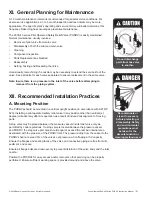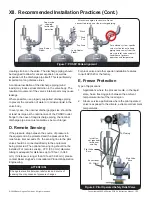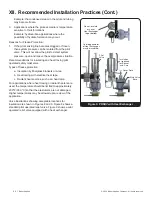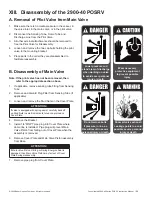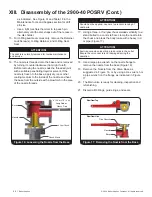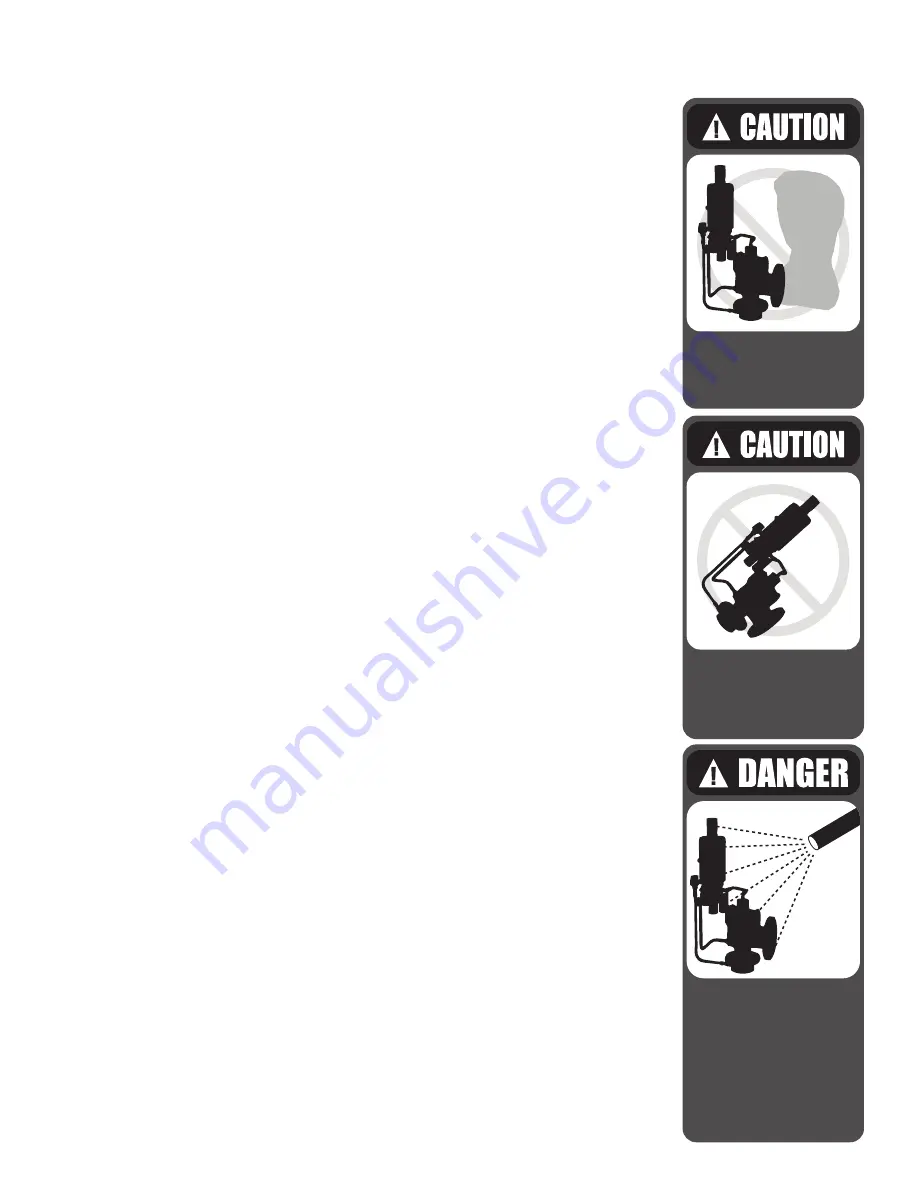
14 |
Baker Hughes
© 2020 Baker Hughes Company. All rights reserved.
VII. Pre-Installation and Installation Instructions
Pre-Installation and Installation
When POSRVs are uncrated and the flange protectors or sealing plugs are removed,
exercise meticulous care to prevent dirt and other foreign materials from entering the inlet
and outlet ports while bolting the POSRV in place.
Mounting Instructions
The POSRVs should be mounted in a vertical upright position (in accordance with API RP
520). Installing a pilot operated safety relief valve in any position other than vertical (±1
degree) will adversely affect its operation as a result of induced misalignment of moving
parts. A stop valve may be placed between the pressure vessel and its relief valve only
as permitted by code regulations. If a stop valve is located between the pressure vessel
and POSRV, the stop valve port area should equal or exceed the nominal internal area
associated with the pipe size of the POSRV inlet. The pressure drop from the vessel to
the POSRV shall not exceed 3% of the valve’s set pressure, when flowing at full capacity.
Ensure the flanges and sealing faces of the valve and connective piping are free from dirt,
sediment, and scale. Ensure all flange bolts are drawn evenly to prevent distortion of the
valve body and the inlet nozzle. Position the POSRVs for easy access and/or removal
so that servicing can be properly performed. Ensure sufficient working space is provided
around and above the valve.
Hydrostatic Testing
Prior to hydrostatic test of the pressure vessel system, the pilot-operated safety relief valve
should be removed and the mounting flange for the valve blocked.
Service Considerations
For best performance, pressure relief valves should be serviced annually unless
maintenance history dictates otherwise. They should be located for easy access and
removal for service.
Remote Sensing
If the pressure drop between the source of pressure in the equipment to be protected and
the pressure at the relief valve inlet exceeds 3%, the sensing line to the pilot valve should
be connected directly to the equipment being protected. The optional sensing ring should
not be installed. For remote sensing, .375” (9.53 mm) diameter tubing is adequate for
distances up to 10 feet, (3.048 m).
For block valve and other special installation features consult API 520 or the factory.
Ramp Rate
As with all pilot operated relief valves, the ramp rate should be carefully controlled in order
to minimize the adverse effects of extreme pressure surges. With many years of operational
experience along with research and development, the importance of proper ramp rate has
been established as one of the primary contributors to many avoidable valve problems.
Based on testing and operating experience, a ramp rate of about 2% of valve set pressure
per second or the equivalent of a consistent increase in pressure over a one minute interval
was shown to have no adverse effects due to water hammer during the pressurization.
This has been shown to provide the best balance between quick start up procedures while
eliminating the chance of avoidable valve damage. For applications where pressurization
rates are expected to be high, a Nitrogen bottle (connected to the field test connector) pre-
charged up to 97% of set pressure may be used.
Pre-fill
During pre-fill of the economizer before pressurization, the prefill pressure is recommended
not to exceed 15-25 psi (1-1.5 bar). For pressures exceeding this limit, a Nitrogen bottle
(connected to the field test connector) precharged up to 97% of set pressure may be used.
Always install valve
in a vertical, upright
position.
Prevent dirt from
entering outlet or inlet
port.
Decontaminate or
clean if necessary
before pretesting or
disassembly. Safety
and environmental
precautions must
be taken for the
decontamination or
cleaning method used.





















